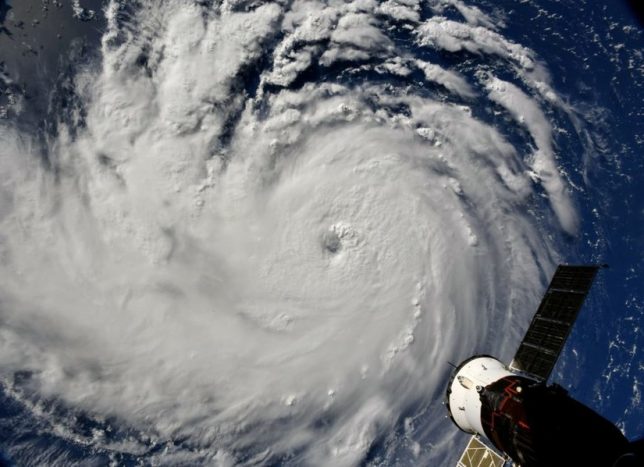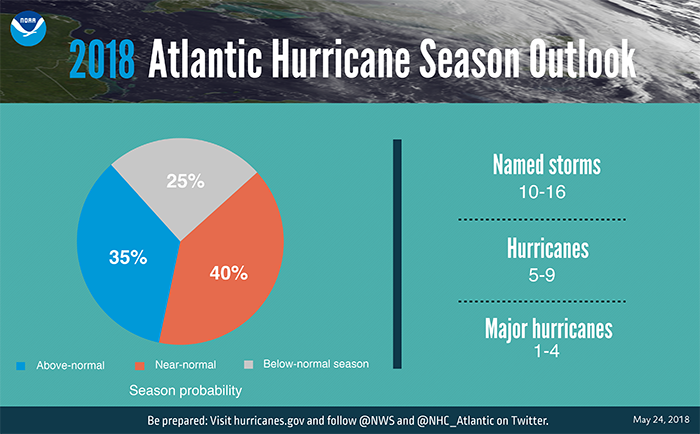Green Watch
Imaginary Disasters


Hurricane Florence may be bearing down on the southern half of the East Coast, but climate change alarmists at the Washington Post have wasted no time in using the disaster to preach global warming. A new study shows that we have a lot to worry about when it comes to changing hurricanes as the planet warms,” the Post declared. According to the study, as “the climate continues to warm, storms will [intensify] faster and more often, and in some extreme cases, grow so powerful that they might arguably be labeled ‘Category 6.’”
You heard that right—climate change is becoming so bad that we’ll soon need a new scale, since the old 5-category hurricane wind scale just won’t do.
The Post’s rush to Armageddon rhetoric is particularly absurd considering the reluctance of the study’s coauthor, Princeton atmospheric scientist Gabriel Vecchi, to call for a Category 6 hurricane designation:
That said, Vecchi isn’t sure about the “Category 6″ concept.
“I think I’d bring a social scientist in here to see what the net value of having a Category 6 designation would be,” he said.
But isn’t climate change causing more hurricanes, however they’re ranked? Not quite.
In May, the National Oceanic and Atmospheric Administration (NOAA) forecasted a 2018 hurricane season involving 10 to 16 named storms and 5 to 9 hurricanes in the Atlantic—one to four of which could produce winds exceeding 111 miles per hour.
Give NOAA credit for predicting Hurricane Florence, which recently reached the Category 4 (“major”) designation. On August 9, the agency dramatically lowered its prediction of an unusually active season from 35 percent to 10 percent, and increased the likelihood of a below-normal season from 25 percent to 60 percent. It also dropped the number of named storms and hurricanes to normal levels.
The reason? The likely emergence of an El Niño weather pattern, a normal event which occurs every few years.
Of course, this isn’t the first time that left-wing alarmists have predicted climate change doom. The 2014 National Climate Assessment (NCA) forecasted increased “hurricane-associated storm intensity and rainfall rates” as a result of climate change, claiming that “the intensity, frequency, and duration of North Atlantic hurricanes, as well as the frequency of the strongest (Category 4 and 5) hurricanes, have all increased since the early 1980s.”
In reality, scientists studying the NCA’s findings wrote that “hurricanes have not increased in the United States in frequency, intensity, or normalized damage since at least 1900.” Even the Washington Post admitted that before Hurricane Harvey in 2017, the country had “no major U.S. landfalls” of hurricanes for a remarkable 12 years.
As CRC vice president Dr. Steven J. Allen has pointed out, one of the more clever tricks pulled by climate change alarmists is misdirection, as defined by famed magicians Penn and Teller:
There’s a word, “misdirection,” that’s used by laypeople a lot. . . and the way laypeople use it is wrong. Laypeople often use it as a synonym for “distraction”—like, “Hey! Look over there. . . .” That doesn’t fool anyone.
The way we use misdirection is kind of a curating of attention, giving the audience a story they can tell themselves that lets them not really know they were distracted.
Take the Post’s claim on August 20 that “the threat of higher seas is also undermining coastal property values [in Charleston, SC] as home buyers—particularly investors—begin the retreat to higher ground.”
The author claims that homeowners living along the coast are “on the front lines of society’s confrontation with climate change,” contending with “rising sea levels,” “hurricanes,” and “even high tides.” “By comparing properties that are virtually the same but for their exposure to the seas,” the Post wrote, researchers “found that vulnerable homes sold for 6.6 percent less than unexposed homes.”
Sounds frightening, right? The researchers, however, “found the drop in prices appears to be driven primarily by investors buying multiple properties or second homes. Such buyers tend to be wealthier and better educated than owners who occupy their coastal homes”—in other words, savvier, more experienced investors negotiating down the price of a house and are not scared away by flood insurance premiums.
Whatever your position on climate change, taken in context, the narrative changes from a disaster created by global warming to the kind of calculated risk experienced by anyone who’s ever bought fire insurance or purchased a house in states with frequent tornadoes.
Then there’s the New York Times, which wrote on September 7th that 25 of the world’s busiest coastal airports are “increasingly vulnerable to the rising sea levels and more extreme storms brought about by climate change.” These airports, the Times warned, are soon likely to be underwater: “All told, extreme weather and rising sea levels today pose one of the most urgent threats to many of the world’s busiest airports, which often weren’t designed with global warming in mind.”
Case in point is the Kansai International Airport in Japan, according to the Times, which flooded during a recent storm, trapping terrified passengers inside.
Kansai, which opened in 1994, is “a feat of modern engineering”—sitting on a man-made island three miles off the coast of mainland Japan “that was built over the course of a decade from two mountains’ worth of gravel and sand [emphasis added].” As anyone who’s ever been to the beach knows, sand is porous, and it sinks under pressure.
The architects who designed the airport, it turns out, expected the artificial island to sink “as the seabed settled under the airport’s weight”—a fact only acknowledged by the Times 15 paragraphs into its 23-paragraph article. The engineers’ mistake was not failing to grapple with global warming; it was failing to realize the island would sink much faster than they had predicted.
The U.S. has enough natural disasters to grapple with ahead of Hurricane Florence without inventing more. The Post and the Times should focus on the real threats facing Americans, instead of conjuring up new ones.




